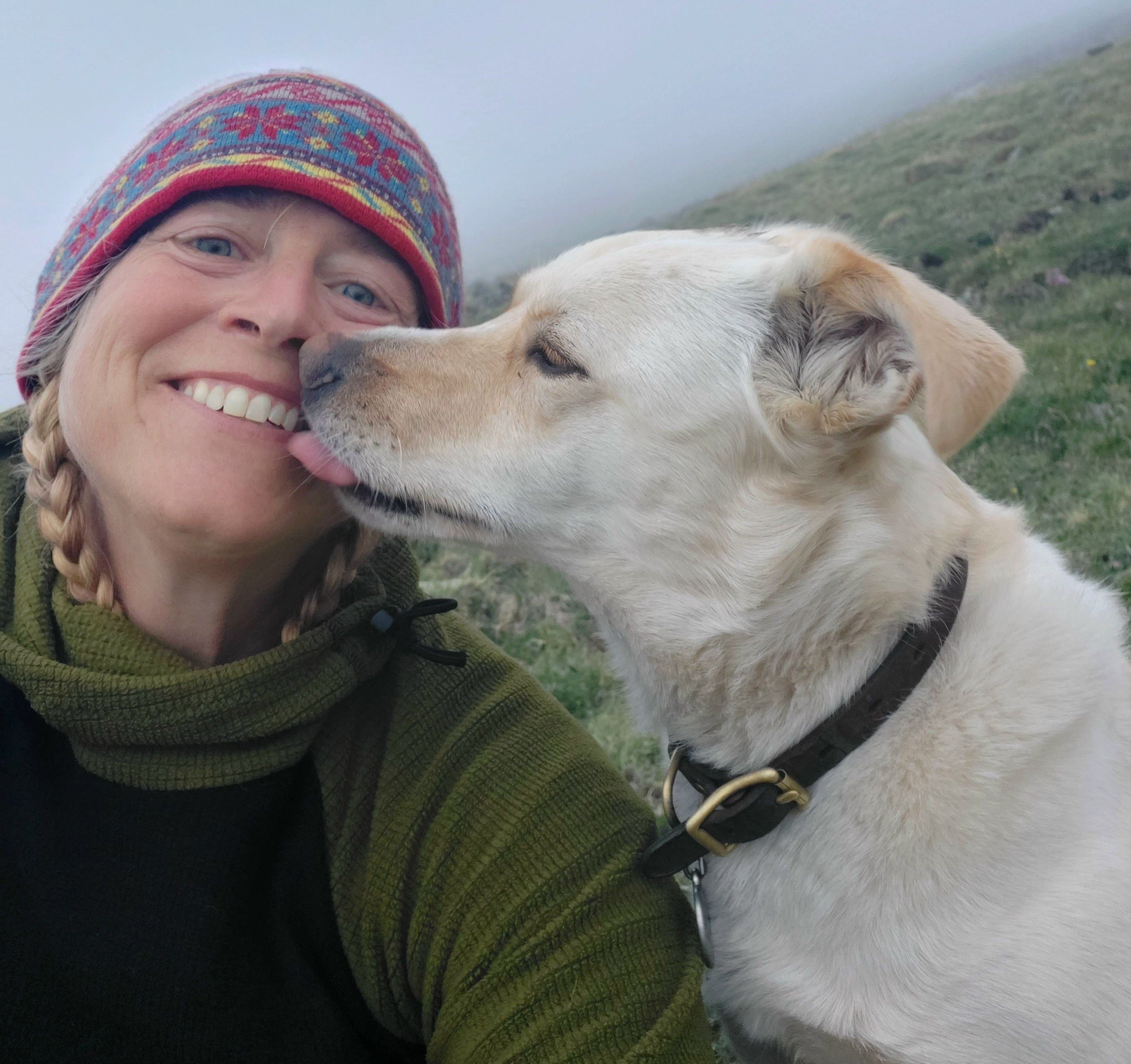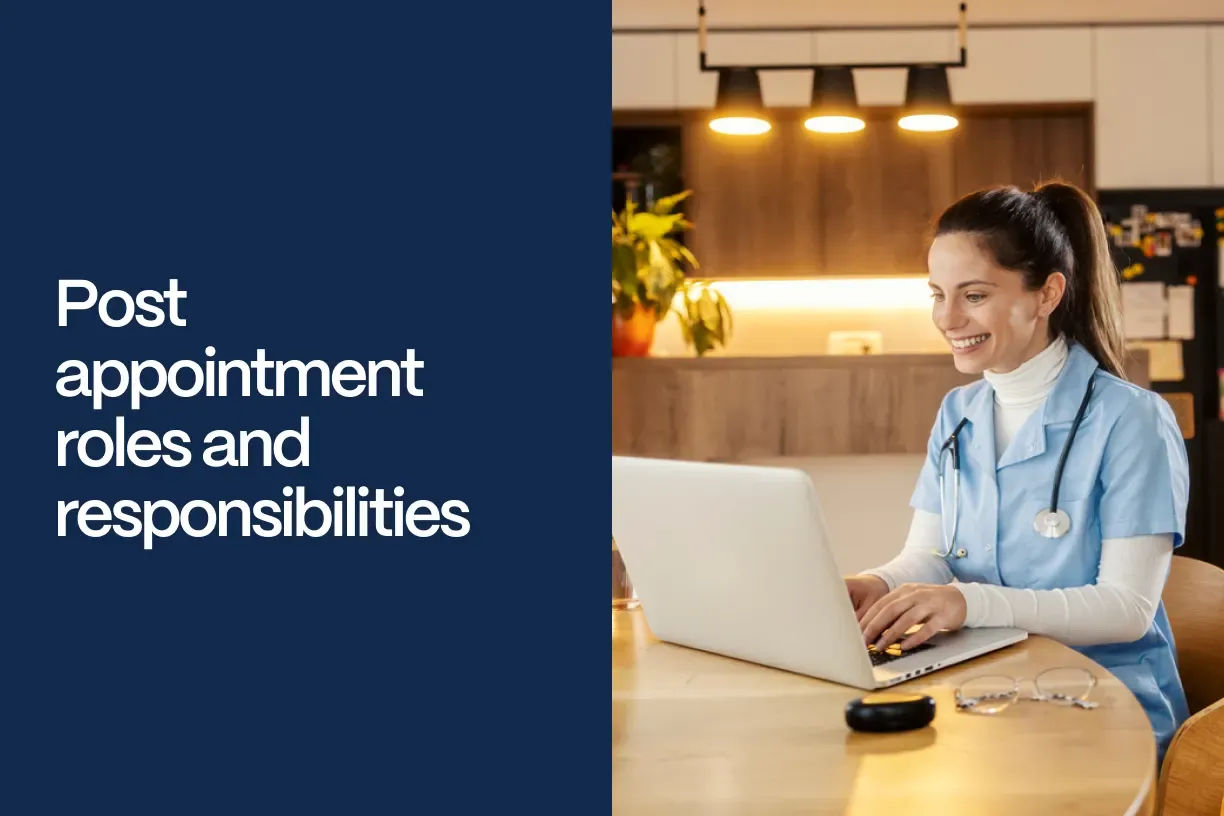Vet Spotlight: Dr. Jo Myers on empathy, communication, and building client trust

Meet Dr. Myers, a practicing Vetster veterinarian and an Advisor to our team. She has many years of experience mentoring veterinary teams and refining communication strategies that work in both clinical and virtual settings. She’s eager to share the lessons she’s learned along the way, including how to navigate tough conversations with empathy and clarity.
You’ll find her tips and guidance on client communications in Level 2 of Vetster’s Virtual Care Master Class.
“Bringing the conversation back to our common goal of helping the pet is usually the most effective strategy.”

How do you typically approach distressed pet owners during virtual consultations?
I slow down and start the interaction with empathy. It’s important to ensure the owner feels heard and can find a mental place where they’re ready to listen. Even if I know what needs to happen next very quickly in the conversation, I can’t be effective until they know I understand. I usually start with a simple but sincere statement that lets them feel heard, like, “I can tell you’re really worried, so let’s work through this together.”
In a virtual setting, the lack of physical presence makes it even more important to be intentional with tone and language. I keep my voice calm, speak clearly, and validate their emotions without jumping too quickly into clinical facts. This helps create psychological safety and opens the door to a more collaborative and productive conversation.
What strategies do you use to de-escalate tension or frustration when a client is upset or confrontational?
De-escalation begins with listening. Not just hearing the words, but listening for what’s driving the emotion underneath. I avoid interrupting, and when I do speak, I start by reflecting back what I’m hearing: “It sounds like you’re feeling really let down with how this is turning out, and I want to make sure I understand what’s most important to you right now.” I avoid defensiveness, even if criticism is directed at me, and focus on aligning around the primary concern, which is the pet’s wellbeing. Keeping my body language neutral and open on camera, maintaining eye contact, and pausing to breathe before responding. These are small tools that make a big difference in tense moments. If needed, I redirect the conversation with professionalism and compassion to get us back on track.
Framing my recommendations as collaborative is also a helpful strategy. I make it clear to the client that they are in charge. My role is to make sure they have all the information they need to make the best decision for their pet and themselves. It takes a little bit of practice, but it’s possible to balance listening, letting the client feel heard, and empathizing with staying in charge of the conversation.

How do you build trust and rapport with clients virtually?
Trust is built through consistency, transparency, and warmth – all of this can be conveyed virtually. What you say is important, but how you say it is equally important. I make eye contact with the camera to simulate in-person connection, use the pet’s name often, and show genuine emotion when appropriate. When discussing sensitive topics, I acknowledge that conversations like these are difficult and slow down my delivery. I also avoid medical jargon, check for understanding frequently, and make space for silence.
Following up is another key to building trust virtually. After delivering difficult news, I summarize next steps and offer written support or resources to help the client feel supported after the call ends. And - just like in traditional practice - a message through the Vetster chat feature goes a long way towards building trust and relationships with clients. It doesn’t take long to set up a system for callbacks, and the message that I care comes through loud and clear when I check back in. That doesn’t mean I get pulled into carrying on without being compensated for it, either. The check-in is just a check-in. If we identify that more time is needed, it can be booked.
Are there signs you look for over video that help you gauge a client's emotional state and adapt your communication style accordingly?
Yes, even through a screen, nonverbal cues are invaluable. I pay close attention to facial expressions, eye contact, posture, and tone of voice. A client who starts off with animated gestures but becomes quiet and withdrawn mid-call may be overwhelmed or shutting down emotionally. I also watch for pacing of speech or changes in breathing that may indicate anxiety. Clients who repeat themselves usually do so because they think I don’t understand. These cues guide me in adjusting my communication. In response to what I notice, I might slow down, offer reassurance, or gently check in by asking, “How are you doing with all of this so far?” Being attuned to subtle shifts helps me respond with the right level of support in real time.

What boundaries or protocols do you have in place for managing clients who become uncooperative during virtual appointments?
Clear expectations and professional boundaries are essential for both the veterinarian and the client to feel safe and respected. If a client becomes verbally aggressive, refuses to engage constructively, or disrupts the consultation, I stay calm and professional but set firm boundaries. Sometimes it’s helpful to remind myself that I’m the professional in the conversation, and that I’m ultimately in charge of how the consultation progresses. I might say, “I really want to help, but I need us to have a respectful conversation in order to move forward. If we can’t do that, I may need to end this session and follow up in writing.”
Bringing the conversation back to our common goal of helping the pet is usually the most effective strategy. When necessary, I also document any inappropriate behavior in the medical record - in a professional manner that I wouldn’t mind having read out loud at a disciplinary hearing or court proceeding - and contact the Customer Experience team at Vetster to report the situation. Ultimately, upholding these standards protects both the pet’s care and the wellbeing of the veterinary team.

Please share a case of when you turned a consultation around, resulting in a positive outcome. What tactics you felt worked best for you.
A pet owner booked a virtual appointment for their cat, who had been straining in the litter box and crying out. The issue had been going on for more than a day and had progressed to the point where he was no longer eating and had begun vomiting. The owner was hoping to avoid an in-person visit due to cost and logistics, and was initially upset when it looked like they needed to take their cat to a traditional clinic.
Instead of interrupting, getting defensive, or jumping straight into a lecture about why in-person care is necessary for a blocked cat, I listened. It might feel more efficient to cut to the chase and what we as vets see as the salient points, but giving them time to feel heard actually saved time in the long run. We walked through a virtual examination together, and when they palpated their cat’s large, firm bladder, it helped the owner understand what their cat needed.
Even though the client started from a place of frustration because they thought the situation could be handled online and were wondering, “Why did I even book this appointment?”, we were able to turn it into a productive conversation. They reached the conclusion themselves, calmly and rationally, that their cat needed in-person emergency care.
I’ve had a lot of experience learning what works when dealing with clients who are upset about the limitations of virtual care. The tactics that work best for me are:
1. Empathize. Validate your client's intent and effort, reducing defensiveness and building trust. I say things like,I completely understand that you were hoping to avoid an in-person visit, and it’s frustrating when things don’t go as hoped…
You did the right thing by coming here first - you acted quickly, and that’s incredibly important for trying to help your pet get through this.
2. Reframe the appointment as valuable. Reframing the appointment as a success shifts the client's mindset from disappointment to empowerment. It helps to say things like,It’s also important to remember that it isn’t always obvious to clients what kinds of things are well-suited to a telehealth appointment and which are not.
Even though I can’t treat this fully through a virtual visit, what we’ve done today is still critical.
We’ve identified a red flag that needs urgent attention, and now you’re not wasting time guessing or waiting.
3. Offer support and direction. I focus on what I am able to do via telehealth.This is when I can go above my skills as a veterinarian and provide pet owner coaching. I may offer tangible help like questions to ask their in-person vet or triage guidance. This shows empathy, expands our relationship and keeps the conversation productive. I try to say things like,You’re ahead of the curve, you know what’s necessary and what to expect, and your pet is getting care sooner because of your quick action.
4. Follow Through. Providing continuity and follow-up reinforces trust and professionalism. At the end of the call I let the client know I’ll send them a short summary via direct message, and that they can message me with any further questions for 24 hours after the call. I reinforce that we’re part of the same team.Here’s what I recommend: take him to the nearest emergency clinic as soon as possible. If cost is a concern, I can give you a list of questions to ask so you know what to expect and can make informed decisions once you get there. I can also give you a list of resources for help with veterinary expenses. Would that be helpful?
In the case above, while the owner was still concerned about the serious nature of their cat’s problem, they were able to shift their focus to what needed to be done next - regardless of how they felt about it. They were able to overcome their logistical and financial challenges for in-person care, see a local emergency vet, decide on a treatment plan that fit into their budget, and had a happy outcome. Even though they were initially upset during our appointment, they expressed their gratitude later when I followed up to ask how their cat was doing.
If you're interested in being featured in our blog, please contact Jennifer, our Manager of Veterinary Success by emailing jennifer@vetster.com
Looking to join Vetster?
You may create an account as a veterinary professional, or learn more here.


